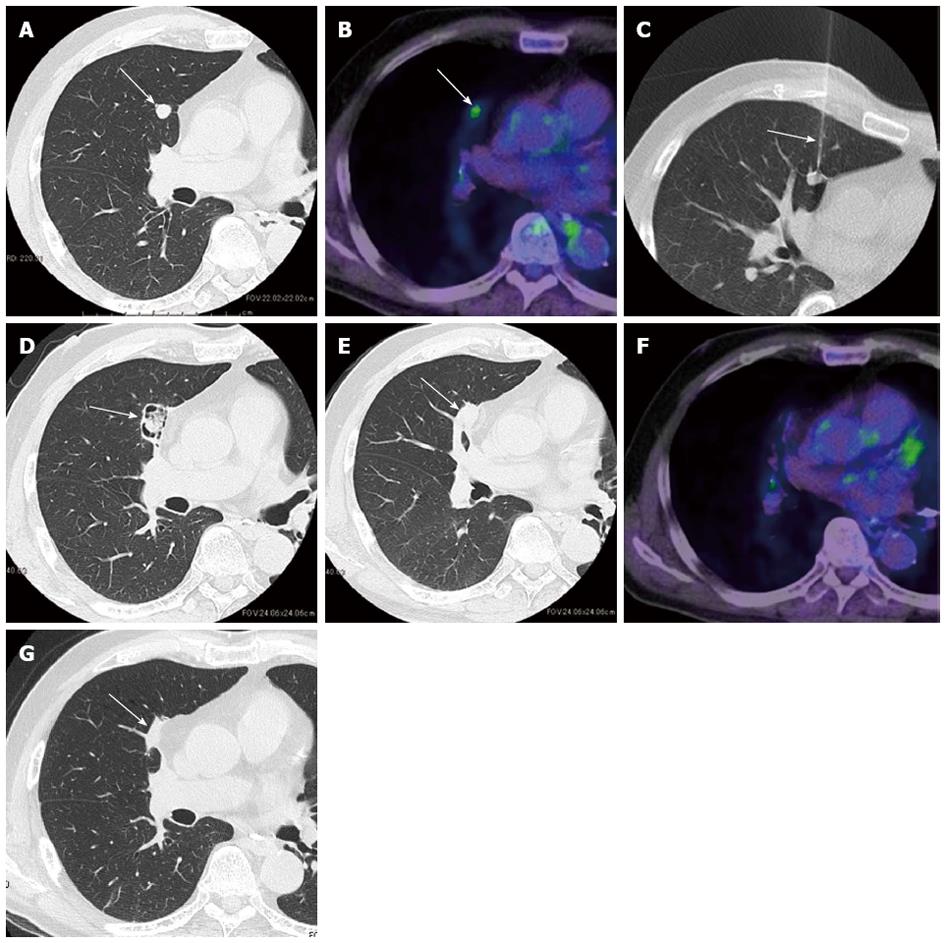Copyright
©2014 Baishideng Publishing Group Co.
World J Gastroenterol. Jan 28, 2014; 20(4): 988-996
Published online Jan 28, 2014. doi: 10.3748/wjg.v20.i4.988
Published online Jan 28, 2014. doi: 10.3748/wjg.v20.i4.988
Figure 1 Pulmonary metastasis in a 68-year-old man with colorectal cancer treated with radiofrequency ablation.
A: Computer tomography (CT) image before radiofrequency ablation (RFA) showing a tumor (arrow) 1.1 cm in size in the right middle lobe; B: Positron emission tomography (PET) image before RFA showing increased fluorodeoxyglucose (FDG) uptake by the tumor (arrow); C: CT fluoroscopic image obtained during RFA showing the treatment of the tumor with a multitined expandable electrode (arrow); D: CT image 1 mo after RFA showing cavity formation around the ablated tumor (arrow); E: CT image 3 mo after RFA showing cavity collapse and an increase in the size of the ablation zone (arrow) beyond the tumor size before RFA; F: PET image 6 mo after RFA showing the disappearance of FDG uptake; G: CT image 24 mo after RFA showing the shrinkage of the ablation zone (arrow) and its appearance as a focal atelectasis.
- Citation: Hiraki T, Gobara H, Iguchi T, Fujiwara H, Matsui Y, Kanazawa S. Radiofrequency ablation as treatment for pulmonary metastasis of colorectal cancer. World J Gastroenterol 2014; 20(4): 988-996
- URL: https://www.wjgnet.com/1007-9327/full/v20/i4/988.htm
- DOI: https://dx.doi.org/10.3748/wjg.v20.i4.988









